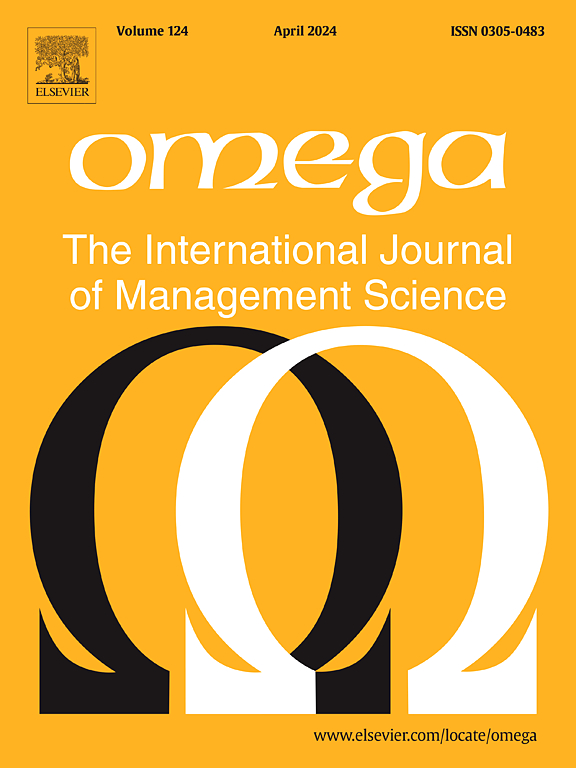Maintaining E-commerce supply chain viability: Addressing supply risks with a strategic live-streaming channel
IF 6.7
2区 管理学
Q1 MANAGEMENT
Omega-international Journal of Management Science
Pub Date : 2025-01-07
DOI:10.1016/j.omega.2025.103276
引用次数: 0
Abstract
Under the recent COVID-19 pandemic and operational disruption, we have witnessed the importance of maintaining supply chain viability. Exploring the channel effect (e.g., the use of innovative sales channels) in addressing supply risks is essential to understanding the viability of e-commerce supply chains. Motivated by the emergence of live-streaming channels in the “new normal”, in this study, we consider an e-commerce supply chain facing supply risks. Capturing supply risks by a random supply viability, we investigate the channel decision on whether to introduce live streaming and the platform's optimal selling format selection (between reselling and marketplace). We prove that live streaming can help address supply risks because it can utilize the streamer's sales effort to impact the live-streaming retail price and create more flexibility. We confirm that a sufficiently high live-streaming efficiency is crucial for introducing a live-streaming channel. Interestingly, we uncover that high volatility of supply risks incentivizes the adoption of live streaming. We also find that incorporating live streaming may change the e-tailer's selling format preferences because the reselling format exhibits a higher acceptance of live streaming than the marketplace one, which is further influenced by the combined influence of live streaming and supply risks. Our results imply that live streaming plays a positive role in maintaining supply chain viability by enhancing the supply chain's overall ability to address supply risks. This paper provides scientific evidence on the importance of having a live-streaming channel in addressing supply risks in the new normal.
求助全文
约1分钟内获得全文
求助全文
来源期刊

Omega-international Journal of Management Science
管理科学-运筹学与管理科学
CiteScore
13.80
自引率
11.60%
发文量
130
审稿时长
56 days
期刊介绍:
Omega reports on developments in management, including the latest research results and applications. Original contributions and review articles describe the state of the art in specific fields or functions of management, while there are shorter critical assessments of particular management techniques. Other features of the journal are the "Memoranda" section for short communications and "Feedback", a correspondence column. Omega is both stimulating reading and an important source for practising managers, specialists in management services, operational research workers and management scientists, management consultants, academics, students and research personnel throughout the world. The material published is of high quality and relevance, written in a manner which makes it accessible to all of this wide-ranging readership. Preference will be given to papers with implications to the practice of management. Submissions of purely theoretical papers are discouraged. The review of material for publication in the journal reflects this aim.
 求助内容:
求助内容: 应助结果提醒方式:
应助结果提醒方式:


